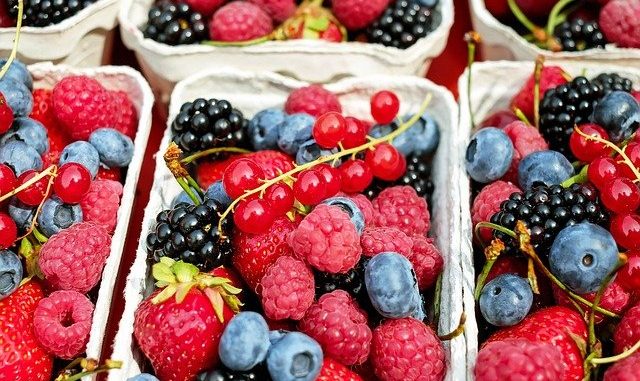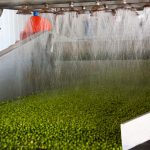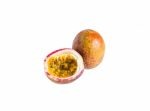
Flavour in fruits and vegetables is one of our most important quality attributes. It is one of the reasons why the consumer selects one item of produce over another.
We also know that fruit and vegetables are important dietary sources of many different types of vitamins and provitamins, nutrients, micronutrients, antioxidants and minerals. All these contribute greatly to overall human health. Unfortunately, even armed with this knowledge the consumption of these foods is still well below recommended levels. One of the reasons is alluded to in the first paragraph – flavour!
Flavour: The Quality Attributes Of Vegetables And Fruit
Flavour is perceived as a combination of three elements. These are taste and smell, and then to a lesser extent texture.
Taste is judged by us using our taste receptors which pick out a number of features. The five basic sensations of taste are:
- sweet
- sour
- saltiness
- bitterness
- umami
Sweetness is often characterised by tasting sucrose and fructose. These are often metabolites for various biochemical energy pathways.
Sourness is produced by small organic acids such as citrate, ascorbate and malate. Saltiness comes from the presence of metal ions like sodium, potassium, calcium etc. Bitterness is attributed to a large range of compounds found in nature. They include phenolics, organosulphur compounds, complex molecules found in vegetables such as cucurbitacins which are often tasted in aged cucumbers.
The final taste sensation is umami which we associate with the presence of glutamates. These are often associated with receptor molecules.
Acting in synergy with taste is smell. Aroma molecules are picked up by receptors in the olfactory bulb in the nose. These molecules are always volatile organic compounds. There are many hundreds of these in different fruits. An apple contains ate least 300 different aroma compounds, the tomato has even more coming in with 400 different types. Whilst only a few volatiles define specific flavour characteristics, it is clear from research that the combination of all these aromas present in different concentrations but having different impacts contributes to the overall subtlety and sophistication behind a typical fruit flavour.
Consumer Issues With Flavour
For many years, consumers have complained long and hard about poor flavour in fruits and vegetables. Very often the supply chain is so extended that produce has aged beyond a point where all the markers for freshness have disappeared. The consumer is left with an underlying and disappointing perception of flavour as the fruit has become overripe, become stale or simply developed flavours more associated with going rotten.
What Are The Supply Chain Issues For Such Poor Flavour
One of the main issues with poor flavour is the emphasis that is NOT PLACED in the breeding of fruit and vegetables. For hundreds of years the main emphasis has been to develop cultivars and varieties that are meant for large-scale production, harvesting and handling. The outcome has been high yield and better stability of the produce for the rigours of the supply chain. Unfortunately, in the process the taste buds of the consumer were forgotten.
In commercial breeding, flavour has not been the highest priority when it comes to commercial breeding. The focus has been to generate high yielding crops and by that it usually meant finding cultivars that were insect and disease resistant. These two challenges can literally wipe out a whole harvest – Colorado beetle and potato being the classic nightmare as in a B movie of the 70s.
Produce collection is an aspect that doesn’t always receive the attention it deserves. It means developing fruits and vegetables that can be mechanically harvested because the cost of labour is often too high and not available. Consider the situation in the UK at the moment where human labour is needed to pick fruit and veg. such as asparagus. If there was a mechanical means of harvesting available, that’s the first thought of the farmer.
Once harvested, produce receives pre- and post-harvest handling. The intention is to develop produce that can resist the rigors of these handling processes. The longer the fruit stays firm the better the shelf-life and thus the greater the desirability from a retailer’s point of view in stocking such fruit. Think of the effort expended to delay ripening during transport.
The final priority is about appearance. In the EU, the trope was ensuring uniformity in shape and keeping a desirable external appearance. After all the consumer cannot officially taste every piece of veg. lets say before buying but they can feel and view it. How many carrots have we bought that looked like a carrot rather than some misshapen body?
In the final instance there have been plenty of issues relating to both growing and post harvest practices. In many cases crops have been reduced to monocultures which implies as short a growing season as possible coupled to mass production. Having collected the produce it is then refrigerated and all those benefits associated with as fresh a flavour as possible are dispensed with.
At the bottom of the list has been flavour but we all know what pleases us when we bite into an exceptional strawberry or cherry say.
Looking Further Into Flavour: Genetics
The consumer is not interested in genetics other than finding out if a food in not genetically modified. The genetics of flavour though is complex and requires serious minds to understand how to improve flavour.
Given that hundreds of volatiles contribute to flavour, the composition is difficult to measure and even to define. Key volatiles will mark out a particular type too and in some cases it might be the lowest concentration of a particular aroma that has the greatest impact on flavour perception. Conducting the sensory work is not impossible but pinpointing a key aroma compound and then measuring it is not straightforward.
One of the issues over many years with breeding has been the uprating of genes for priority traits such as texture, fruit production and so on at the expense of uprating genes for flavour. The upshot has been a loss and dilution of these genes.



1 Comment